The best Wi-Fi extenders right now
With more of us working from home and relying on our internet connections, there’s nothing worse than a poor Wi-Fi signal. Fortunately, this doesn’t have to be the case, as a wireless extender can provide a cheap way of getting quality Wi-Fi where you need it in your home. While it’s true that buying a new router or mesh system offers better results, it’s an expense that most of use could do without. Besides, why upgrade to a new router if it’s only one area in your home that’s an issue?
We’ve tested practically every router, mesh system and wireless extender available, so can help when it comes to deducing the best models from the worst. As well as testing the ease with which they can be set up, we run throughput tests on every extender to determine how much of an improvement you’ll likely see.
In this guide, we’ve included a wide range of products, aimed at different budgets and needs. From the best mesh upgrades to an existing router to the cheapest plug-in extender, we’ve got you covered.
What to look out for when buying a Wi-Fi extender
If you know what you want, then skip to our list. If you need a bit of help, then answer the following questions before you buy to help you make the right decision.
- What type of extender do you want? Traditional extenders give you a new wireless network, then connect wirelessly to your router. They’re easy to set up, but you’ll have two networks to manage. A mesh extender works with your existing network, using the same name. They’re more expensive, but a more elegant solution.
- Do you need Ethernet ports? Having wired Ethernet ports on your extender lets you plug in devices that don’t have Wi-Fi built-in, or gives a more stable connection where you have a device that has slightly flaky wireless.
- Would Powerline help you? A Powerline-based Wi-Fi extender works by running data over your home’s mains power, rather than using a wireless connection. Performance can vary hugely between homes, but these devices can work in houses that have thick walls or suffer from a lot of interference.
- What version of Wi-Fi do you want? Wi-Fi 5 (also known as 802.11ac) is a good, well-supported standard, with products available at a decent price. This will likely suit most people. Wi-Fi 6 is the latest standard and can help you upgrade your network in preparation for new wireless devices, but you’ll pay far more for the privilege.
- What speed do you need? We’ve listed the speeds that manufacturers list, although they’re not indicative of the speeds you’ll actually get, as it’s the connection to your router that governs the overall speed. The newer (and faster) your main router is, the faster the extender that it will take, so use your router’s age as a rough guide.
The best Wi-Fi extender is the TP-Link RE365 Wi-Fi Range Extender
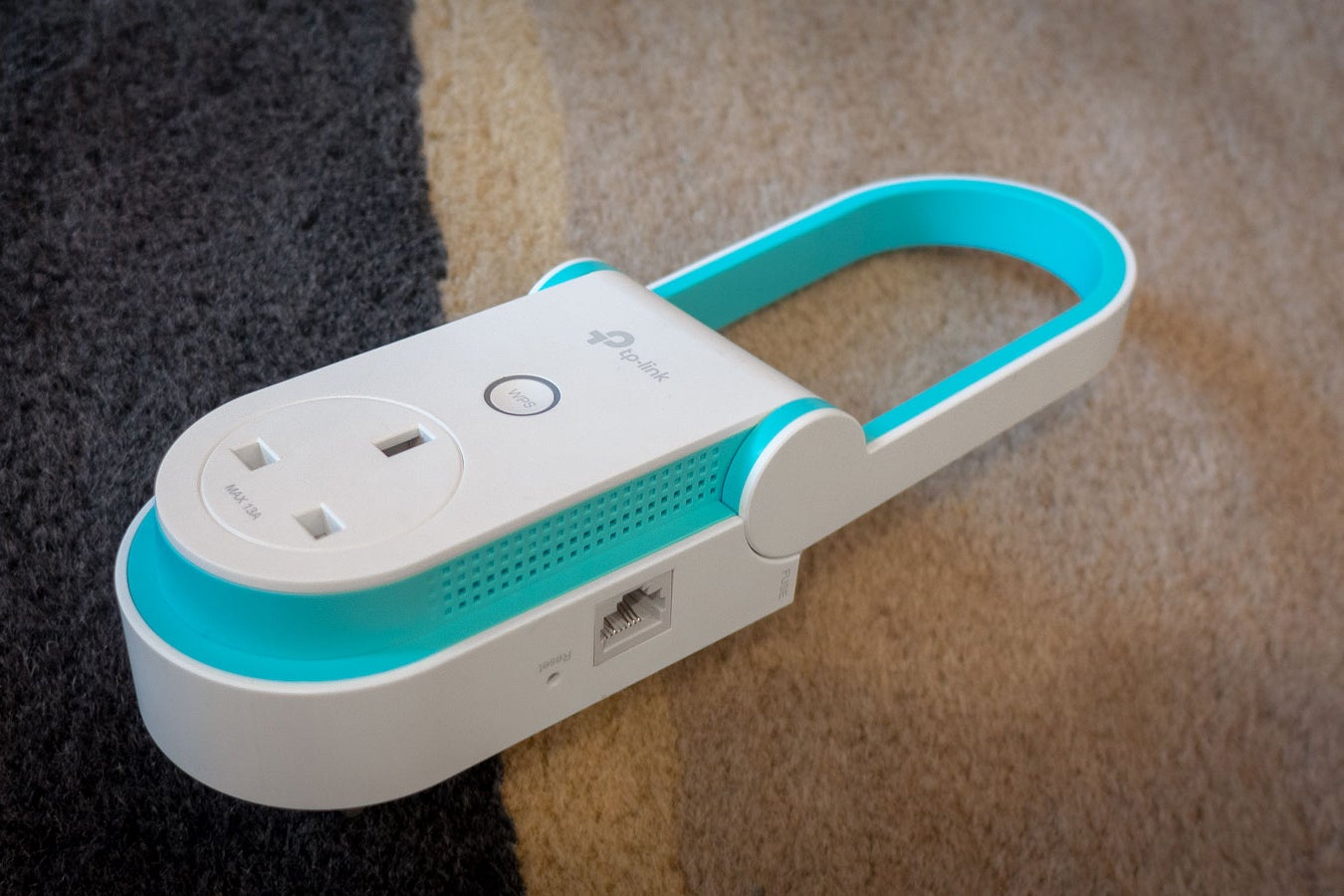
Specifications:
Type: Wireless extender | Size (HxWxDmm): 125 x 70 x 77mm | Ethernet ports: 1 x 10/100Mbps | Wi-Fi standard: Wi-Fi 5 (867Mbps 5GHz, 300Mbps 2.4GHz) | Operating modes: Extender, access point
You can read our more detailed review of the TP-Link RE365. This simple, well-priced extender boosted speed and range and scored 4.5 out of 5.
The pros:
- Ethernet port
- Passthrough power socket
- Decent performance
- Great price
The cons:
- Basic web interface
If you just need to boost wireless performance and speed to one or two rooms, the TP-Link RE365 Wi-Fi Range Extender offers excellent value. Simply plug it in; it can be run in extender mode, creating a new wireless network for you to join, while connecting wirelessly to your router.
A 10/100Mbps Ethernet port on the side can be used to connect up wired devices. You can also run an Ethernet cable to your router and run the extender as a more traditional wireless access point. This option provides greater flexibility, adding Wi-Fi to a garden office where you have Ethernet already, for example.
You get dual-band Wi-Fi 5 on this model. Testing against our standard router, we saw speeds improve from 42.6Mbps in our bathroom, where we struggle to get a signal, to 115.8Mbps.
You don’t get much in the way of features beyond extending your network, but for this price, the TP-Link RE365 can’t be beaten.
The best mesh Wi-Fi extender is the BT Mini Whole Home
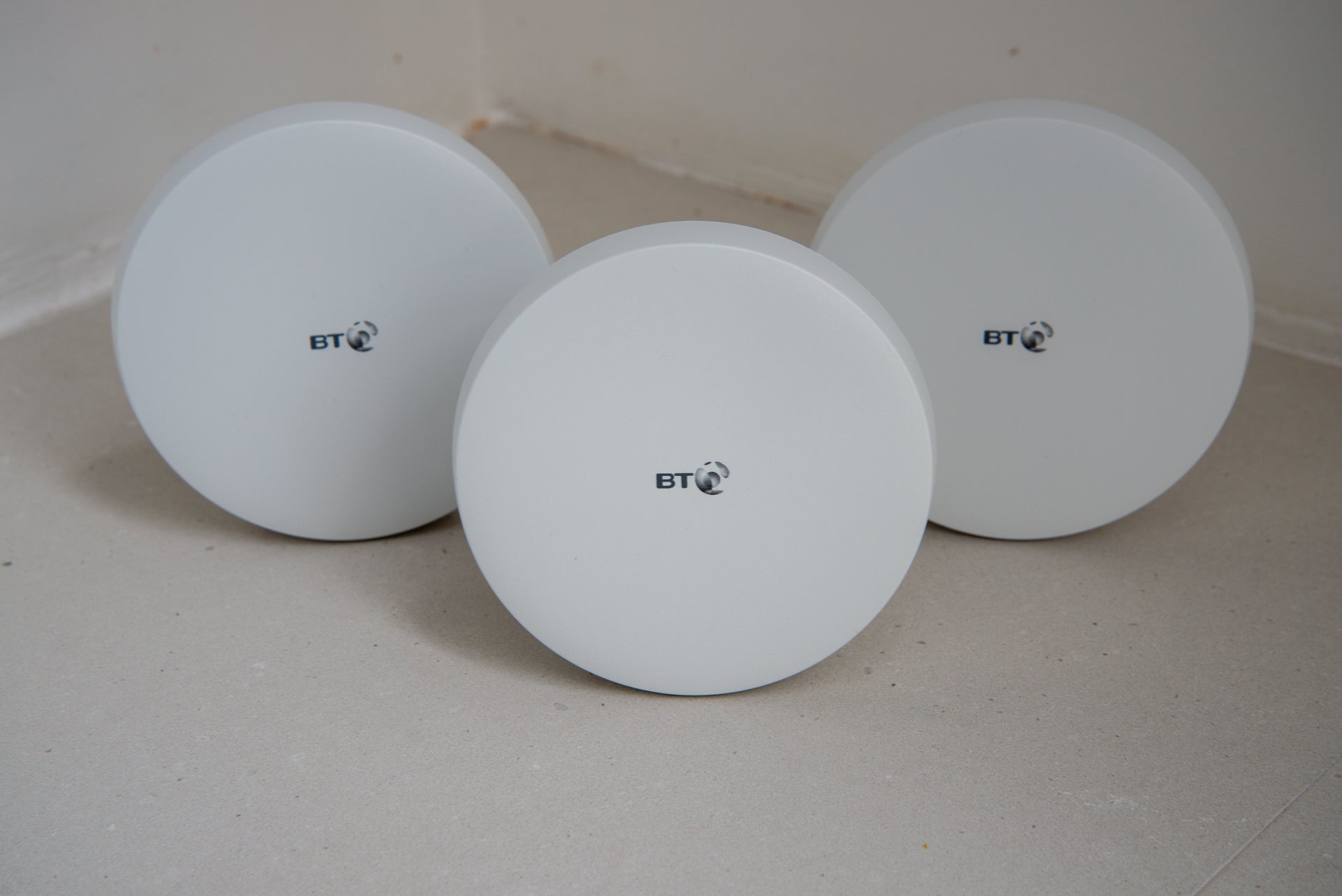
Specifications:
Type: Mesh extender | Size (HxWxDmm): 120 x 120 x 50mm | Ethernet ports: 1 x Gigabit Ethernet (per disc) | Wi-Fi standard: Wi-Fi 5 (866Mbps 5GHz, 300Mbps 2.4GHz) | Operating modes: Mesh
You can read our more detailed review on the BT Mini Whole Home. This well-priced extender scored 4 out of 5.
The pros:
- Excellent value
- Works with any router
- Great coverage
The cons:
- A little slow
- Few additional features
Most mesh systems have to replace your existing router, but the BT Mini Whole Home Wi-Fi is different, since it works with your existing router. Just plug the first disc in via Ethernet, then spread the two other discs around your home to get a new, faster wireless network. Remember to turn off Wi-Fi on your existing router for the best performance.
Using Wi-Fi 5, the BT Mini has one of the slowest headline throughput rates of any mesh system: we got 224.43Mbps close-up, dropping to 148.89Mbps in our bathroom. However, while there are faster mesh systems available, they’re more expensive, and the BT Mini Whole Home beats other wireless extenders, with the convenience of a mesh system. The main benefits of mesh are that your devices automatically connect to the strongest disc, and you have one network to manage.
You get a guest network, but that’s the limit of additional features. While you can buy faster mesh systems, if you want a cheap mesh upgrade and want to keep your existing router, then this is a great set.
The best add-on mesh Wi-Fi extender is the Netgear Nighthawk X4S Tri-Band Wi-Fi Range Extender
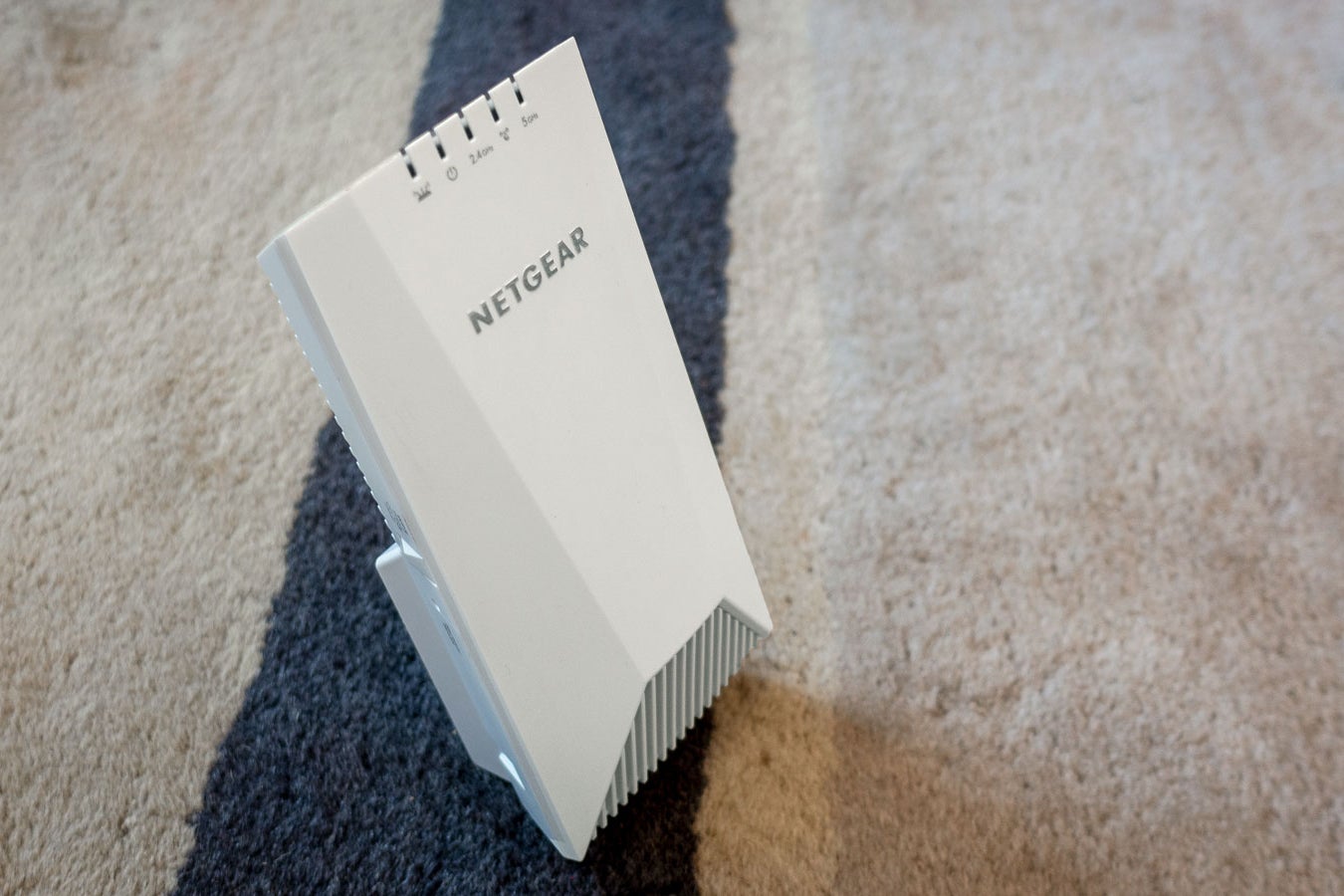
Specifications:
Type: Mesh extender | Size (HxWxDmm): 161 x 84 x 77mm | Ethernet ports: 0 | Wi-Fi standard: Wi-Fi 5 (866Mbps 5GHz 1, 866Mbps 5GHz 2, 400Mbps 2.4GHz) | Operating modes: Mesh, extender
You can read our more detailed review of the Netgear Nighthawk X4S Tri-Band Wi-Fi Range Extender. It’s a touch expensive, but if you want the best, this mesh system score 4 out of 5.
The pros:
- Very fast
- Easy to configure
- Adds mesh features to any router
The cons:
- Bulky
- No Ethernet ports
Most Wi-Fi extenders offer dual-band wireless, but the Netgear Nighthawk X4S Tri-Band Wi-Fi Range Extender has three bands. The extra band is an additional 5GHz one, dedicated for connecting to your existing router, while the remaining 5GHz and 2.4GHz networks are for your devices. This means that you don’t share any available bandwidth between your devices and the connection to your router.
This is how mesh systems (or the good ones, at least) work. While you can ruin the X4S in extender mode with its own network name, you can also run it in mesh mode with your existing router, giving you a single network name through your home. This is great for convenience, as you don’t have to manually change which network you’re connected to.
Testing in our bathroom, which suffers from a poor connection, we saw connection speeds jump from 42.6Mbps to 187.4Mbps. That’s more than four times faster than without the extender.
There are some negatives. First, you don’t get an Ethernet port. Second, the system is expensive. And, third, you don’t get much in the way of extras beyond simply extending your Wi-Fi range. Still, if you want a simple upgrade for your home network, giving you a mesh-like experience without replacing your router, this is a great buy.
The best Wi-Fi 6 Extender is the Netgear Nighthawk AX8 WiFi 6 Mesh Extender (EAX80)
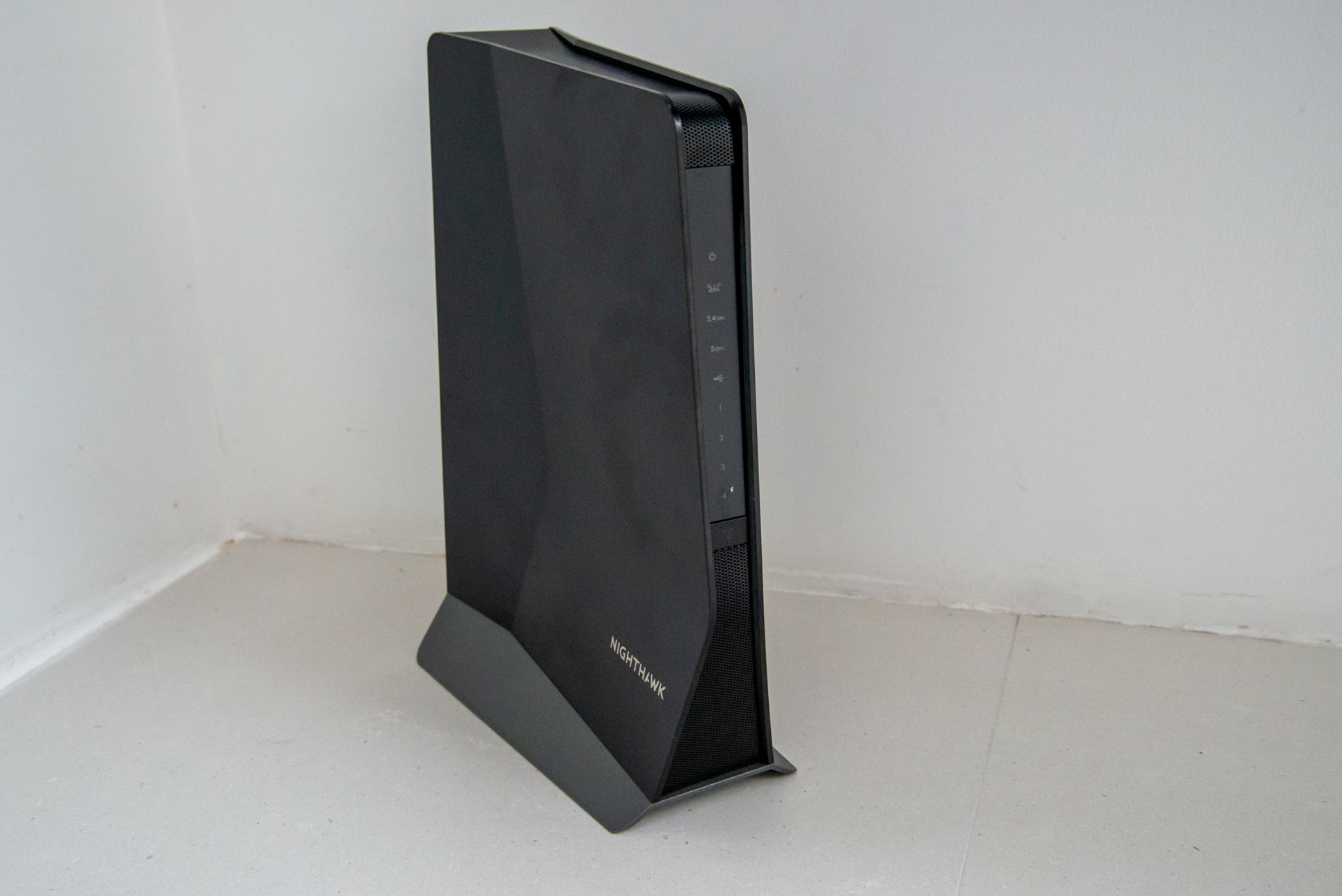
Specifications:
Type: Mesh extender | Size (HxWxDmm): 279 x 197 x 106mm | Ethernet ports: 4 x Gigabit Ethernet | Wi-Fi standard: Wi-Fi 6 (4.8Gbps 5GHz, 1.2Gpbs 2.4GHz) | Operating modes: Mesh, extender and access point
You can read more in our detailed review of the Netgear Nighthawk AX8 WiFi 6 Mesh Extender (EAX80). An expensive upgrade, but one that brings new technology, this extender scored 4.5 out of 5.
The pros:
- Works as an extender or an access point
- Fast
- Easy to manage
The cons:
- Few additional features
The Netgear Nighthawk AX8 WiFi 6 Mesh Extender (EAX80) isn’t your average extender: this is a Wi-Fi 6 model, using the latest wireless standard. It can be used in two ways. First, you can use it in wireless extender mode, with the kit able to turn any existing router into a mesh system. This means you get to use one network name throughout your home, rather than giving the extender its own network.
Second, you can use it in access point mode, hooking it up to you router via Ethernet. You can then extend wireless to another part of your home, or treat the EAX80 as a Wi-Fi 6 upgrade to any existing router. Hooked up via Ethernet, or connected to a fast existing system, this Wi-Fi 6 extender managed throughputs of 457.99Mbps at close range and 188.96Mbps in our bathroom, with the extender placed next to the router. In short, then, this is the fastest Wi-Fi extender we’ve tested.
It’s nice to see four Gigabit Ethernet ports on the back, giving you the flexibility to connect wired devices. You miss out on extras, though, and there isn’t even a guest network option. Nevertheless, despite being expensive, this i a great add-on to a Wi-Fi 6 router or, used in access point mode, a great Wi-Fi 6 upgrade for an old router.
The best Powerline Wi-Fi Extender is the Devolo Magic 2 WiFi next
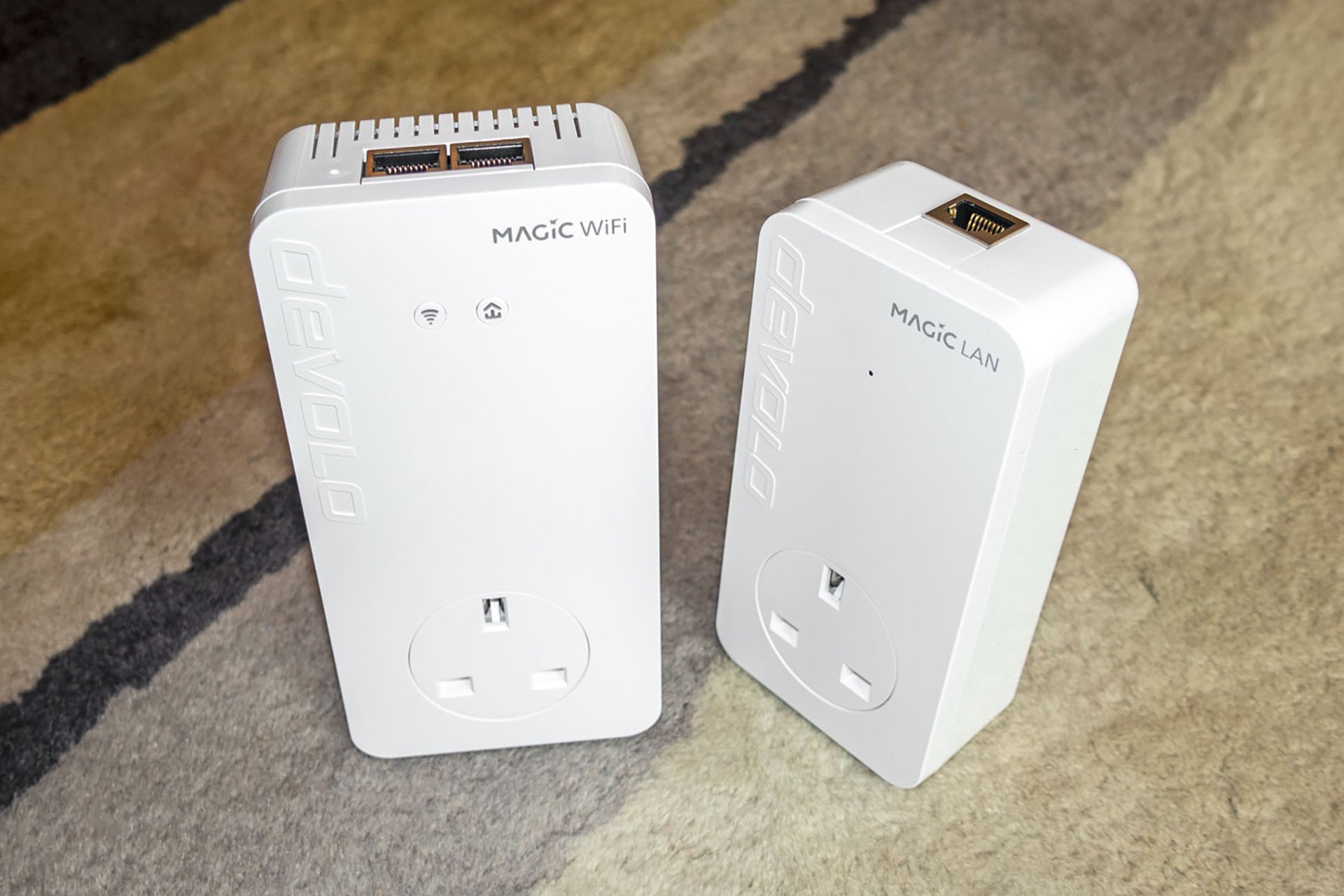
Specifications:
Type: HomePlug Mesh | Size (HxWxDmm): 152 x 76 x 40mm | Ethernet ports: 2 x Gigabit LAN | Wi-Fi standard: Wi-Fi 5 (867Mbps 5GHz, 300Mbps 2.4GHz) | Operating modes: Mesh
You can read our more detailed review of the Devolo Magic 2 WiFi next. This system is expensive and basic but can get wireless where other systems can’t, and scored 3.5 out of 5.
The pros:
- Powerline gives you a connection where wireless can’t reach
- Easy to set up
- Decent configuration options
The cons:
- Expensive
- Relatively slow
Expensive and quite slow – so why is the Devolo Magic 2 WiFi next on our list? The simple reason is that it uses Powerline. You plug the first adapter into a power socket near your router, and use Ethernet to link the two; the second wireless adapter plugs in where you need it, delivering data to your router over your mains cables. This means that if you live in a house with a lot of interference, or you have thick walls, you’ll still get Wi-Fi where other extenders would fail.
If you add additional Devolo Magic 2 next access points into the mix, you can build up this system into a proper mesh network, too. Performance varies from house-to-house, and Powerline can be temperamental. In our tests, we boosted speeds in the bathroom from 42.6Mbps to 85.2Mbps. That’s the slowest speed from an extender but shows that this kit can get wireless where you need it.
A guest network and parental controls are available, but these extras don’t go far enough to justify the price for the majority. Most will be better off opting for one of the other products on this list – but if you live somewhere where wireless is particularly problematic, this kit has the power to get wireless where you need it.
Comparison table
Type |
Wi-Fi Standard |
Operating modes |
|
| TP-Link RE365 Wi-Fi Range Extender | Wireless extender | Wi-Fi 5 (867Mbps 5GHz, 300Mbps 2.4GHz) |
Extender, access point
|
| BT Mini Whole Home | Mesh extender | Wi-Fi 5 (866Mbps 5GHz, 300Mbps 2.4GHz) | Mesh |
| Netgear Nighthawk X4S Tri-Band Wi-Fi Range Extender | Mesh extender | Wi-Fi 5 (866Mbps 5GHz 1, 866Mbps 5GHz 2, 400Mbps 2.4GHz) | Mesh, extender |
| Netgear Nighthawk AX8 WiFi 6 Mesh Extender (EAX80) | Mesh extender | Wi-Fi 6 (4.8Gbps 5GHz, 1.2Gpbs 2.4GHz) |
Mesh, extender and access point
|
| Devolo Magic 2 WiFi next | Mesh extender | Wi-Fi 5 (867Mbps 5GHz, 300Mbps 2.4GHz) | Mesh |
Guides to technical terms
Wireless networks can be slightly confusing, particularly with all of the jargon. One of the biggest things to try to understand is network standards and speeds. Our explainer on What is Wi-Fi 6? can help you understand the differences between the newest standard and the older ones.
And, it’s worth understanding the differences between a mesh system and traditional Wi-Fi, so you can work out what’s best for your home.
- Best Wi-Fi range extender: TP-Link RE365 Wi-Fi Range Extender
- Best mesh Wi-Fi range extender: BT Mini Whole Home
- Best add-on mesh Wi-Fi range extender: Netgear Nighthawk X4S Tri-Band Wi-Fi Range Extender
- Best Wi-Fi 6 Wi-Fi range extender: Netgear Nighthawk AX8 WiFi 6 Mesh Extender (EAX80)
- Best Powerline Wi-Fi range extender: Devolo Magic 2 WiFi next